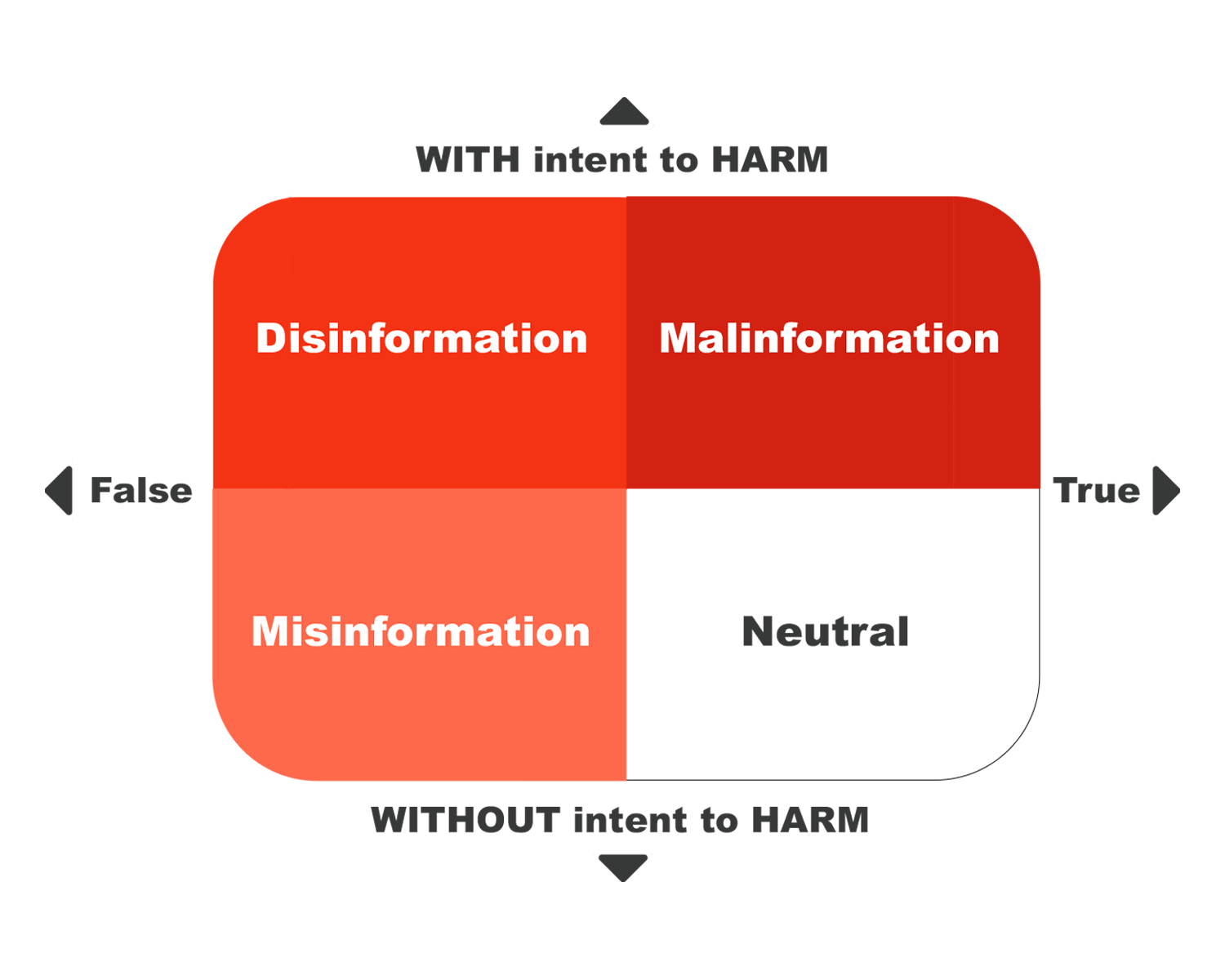Do you know there are up to 92% of Americans who think misinformation and disinformation have caused a lot of confusion? Or in 2018, up to 86% of Americans perceived online news sites to occasionally report fake news stories? Furthermore, are you aware that U.S. is the second most influenced country in the world by misinformation regarding COVID-19?
Surprised about what you read? In this day and age, oftentimes we do not realize the convenience of information also comes with concerns.
The downside of easy-to-reach information is information disorder. More and more people are producing unverified or misleading content with the audience sharing them without verification. Information disorder surrounding topics such as rumors, scams, frauds, fake news have become serious problems that create great inconvenience to everyone.
Why you need to care about information disorder?
Information disorder can be chaotic, causing negative influence on many issues. Sometimes misinformation can trick people into dangerous situations.
For example, after Trump sarcastically “suggested” injecting bleach to fight coronavirus on April 23rd, many people did what Trump advised, and as a result, were sent to the hospital for treatment.
Other times, disinformation could cause serious impact on public affairs, such as presidential election.
Mis-, dis-, and mal-information have been manipulated in every aspect of our daily lives – from personal health issues, public opinions, or national events. Whether with harmful intentions or not, it is very easy for anyone to create problematic content nowadays, which unfortunately makes the spread of false information more rampant than ever.
Any of us could be influenced by information disorder without being aware, and any of us could be victims of mal-information.
Wait, misinformation and disinformation? What’s the difference?
Both misinformation and disinformation are false contents. But how can we differentiate the two?
Generally speaking, misinformation is spread unintentionally and causes no immediate harm to anyone, while disinformation refers to content spread on deliberate purpose to be deceptive.

Disinformation and its purpose
Disinformation is content deliberately created in order to attack certain people or to achieve certain goals. It consists of false information, whether texts or images with intentionally false captions and is exclusively manipulated to:
- Cause chaos in the society for the sake of politics or other public issues
- Spark worry and fear among people
- Benefit from the popularity of disinformation being spread, and so on.
“Bill Gates’ vaccine” is a great example of disinformation in which the website Biohackinfo.com claims Bill Gates is going to monitor people by using anti-COVID-19 vaccine.
Misinformation
Compared to disinformation, misinformation is content shared with no intention to harm or attack others. When people believe the rumors and the contents of disinformation, it becomes misinformation. That is, people might share pieces of misinformation without realizing it is false and could cause harm.
Mal-information and its purpose
Other than the ones we’ve covered so far, there is one more type of information disorder: mal-information. We all know our eyes can be deceiving, as shown in this article. That is, when deceptive images or information are wrongly made use of, it would be converted into mal-information.
Mal-information is information based on truth but manipulated against someone intentionally. The agents might abuse private information.
For example, they might reveal personal emails, change the context by adding new or false captions or establish a tenuous connection between one’s words and deeds to mislead people.
The issues between Taylor Swift and Kanye West is a clear example of mal-information.
How to stop false information from spreading?
It’s easy to stop the dissemination of false information if you:
- Do NOT share any messages until you are sure it is correct and reliable.
- Check every time you receive new information.
How can I check if the information I received is reliable?
- Turn to mainstream media and fact-check organizations.
One of the most reliable ways is to check if the information is reported by mainstream media. - Use Trend Micro Check to verify the content with real-time results.
When browsing through social media, you can use the “Share to” function on Trend Micro Check to verify the nature of information in seconds.
Check out how Trend Micro Check works.
If you think Trend Micro Check is helpful, please share to protect your family and friends! Click on the button below to try Trend Micro Check for free now:
